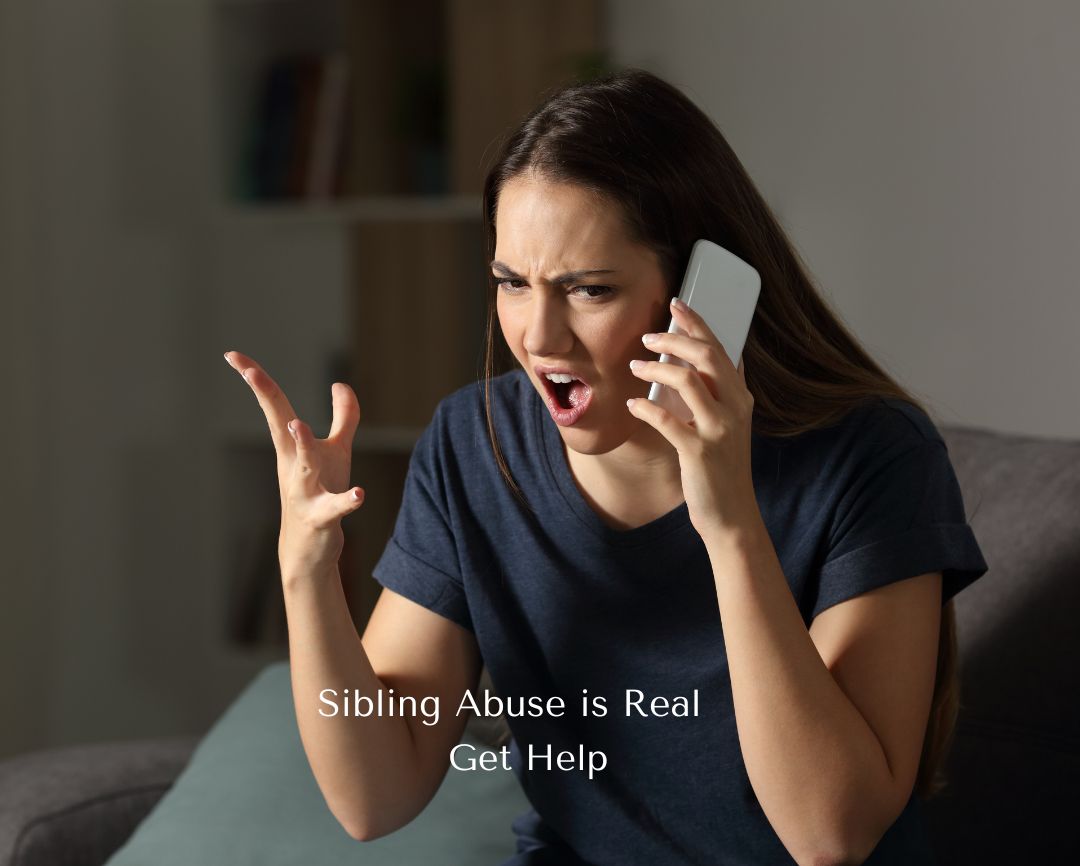
Breaking the Silence: Unmasking Sibling Abuse and Finding a Path to Healing
Within the confines of family secrecy and childhood recollections, a distressing reality often lurks: sibling abuse. These are the narratives seldom shared, the wounds invisible, and the sufferers enduring in silence. In this exploration, guided by the insights of esteemed professionals in coaching and educational psychology, we illuminate this obscured realm. We’ll navigate the troubling landscape of sibling abuse, uncover its concealed manifestations, and unveil the enduring impact it leaves. Most importantly, we’ll illuminate the path to healing and recovery for those ensnared in its grip.
Sibling Abuse: An Unseen Epidemic
Sibling abuse isn’t merely a footnote in the tapestry of family dynamics; it’s a pervasive yet unspoken epidemic thriving behind closed doors. Startlingly, studies suggest that sibling violence surpasses that of spousal or parental abuse. Nevertheless, it remains veiled in silence, overshadowed by misconceptions about the sanctity of sibling bonds.
According to Dr. Murray Straus, a pioneer in family violence research, “Sibling violence is often dismissed as normal sibling rivalry, but the harm it inflicts can be profound and lasting.” Sibling abuse is sibling rivalry on steroids.
The Role of the Narcissistic Parent
An often overlooked facet of sibling abuse is the influence of the narcissistic parent. This toxic dynamic exacerbates conflicts between siblings, as the narcissistic parent manipulates and favors one child over the other. Dr. Dan Olweus, a renowned psychologist, notes, “Narcissistic parents can fuel sibling rivalry, using one child as a pawn, thereby perpetuating a cycle of abuse and leaving the victim isolated and powerless.”
Unveiling the Darkness: Recognizing Forms of Sibling Abuse
Sibling abuse operates surreptitiously, making it particularly insidious. It’s imperative to discern its subtle manifestations, as they serve as the key to unlocking the torment. Dr. Susan Forward, a respected therapist, elucidates, “Sibling abuse manifests through physical aggression, verbal and emotional torture, social isolation, and neglect, leaving lasting scars visible and unseen.”
The Abusive Sibling: A Precursor to Narcissism
It’s essential to acknowledge that the abusive sibling may be on a trajectory towards narcissism themselves. The unchecked power dynamics within the family unit can cultivate narcissistic tendencies, perpetuating a cycle of harm. Dr. Craig Malkin, a clinical psychologist, warns, “Abusive siblings may develop narcissistic traits, such as a lack of empathy and a desire for control, which not only harm the victim but also lay the groundwork for future abusive behavior.”
The Enduring Impact: Scars that Linger
Sibling abuse casts a long shadow, inflicting deep emotional wounds that endure. Dr. Judith Herman, a renowned psychiatrist, affirms, “Victims grapple with emotional trauma, shattered relationships, and a fragmented identity, enduring profound suffering unless they break free from their abuser.”
The Heartache of Invalidation
One of the most agonizing aspects of coping with sibling abuse is the pervasive invalidation victims’ face from their loved ones. Dr. Beverly Engel, a psychotherapist and abuse expert, emphasizes, “Victims often endure disbelief, denial, and betrayal when disclosing their abuse, compounding their anguish and perpetuating their isolation.”
The Cycle of Abuse
Tragically, the torment of sibling abuse often transcends childhood, persisting into adulthood. Without intervention and healing, the cycle of abuse continues, manifesting in various forms of emotional manipulation and coercion. Dr. Patricia Evans, a bestselling author on interpersonal communication, warns, “Abusive siblings may perpetuate the cycle of abuse well into adulthood, utilizing tactics such as minimizing accomplishments, destroying relationships, and seeking control over family inheritance.”
Seeking Healing and Hope
Despite the overwhelming pain, there is hope, and healing is attainable with compassionate support. Dr. Bruce Perry, a renowned psychiatrist, advocates, “Speak out, seek therapeutic help, consider legal action, and find strength in support groups, fostering resilience and reclaiming agency.”
Breaking the Chains of Silence with Expert Guidance
Recognizing sibling abuse as a grave issue is the first step toward prevention and intervention. Dr. Gabor Maté, a renowned physician, stresses, “Education, intervention, and family healing are crucial in breaking the cycle of abuse, fostering healthy relationships, and nurturing resilience.”
Unlocking Your Superpower with Expert Guidance
During coaching sessions, individuals can harness their inner strength by envisioning a brighter future free from abuse. At Waypoint Wellness & Performance Coaching we encourage individuals to ask, “What if? What if you were heard, cherished, and respected?” By challenging rigid beliefs and embracing vulnerability, individuals can embark on a journey of healing and self-discovery.
Your Path to Healing Starts Here
The pain caused by sibling abuse need not define your life any longer. So how can you live “as if” you were never abused by a jealous and difficult sibling? You can begin to explore who you truly are and harness your dreams and aspirations “as if” the abusive sibling was never in your life. Reach out to Lesley or George today to begin your journey toward healing, self-discovery, and a brighter future.
- For further reading check out how to cope with an abusive sibling who is robbing you of your family inheritance. Click Here
- To reach out to George or Lesley for coaching support head over to the contact page. Click Here





